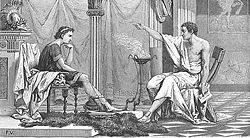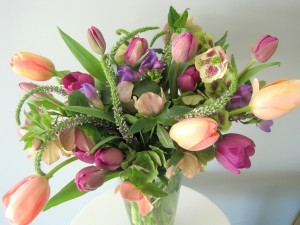Ah, the sleepy sweetness of the helleborus. I love how the “nodding” cup shape of the helleborus begs to be held for closer inspection. The free form nature of these beauties lend themselves as the ideal flower for vintage or loose garden arrangements.
The hellebore, also know as the ‘Christmas Rose’ (fall varieties) or ‘lenten rose’ (Spring/Lent varieties), belongs to the Ranunculaceae family, whose members also include the anemone, ranunculus, clematis and aconite/monkshed. The helleborus flower is comprised of nectaries surrounded by 5 ‘petal-like’ sepals. The sepals do not fall off stem like petals would. This characteristic makes them a perfect candidate for boutonnieres and corsages.
Availability:
—In the spring month of March and April we see the green varieties and the green dappled with burgundy. We see the deep, dusty pink, almost plum, ‘moonshine’ variety from August through November.
Vase Life:
—Approximately 5-7 days.
Tips:
—Score the stem a few times with sharp knife approximately 2-3 inches from the bottom of the stem to get a few extra days longer out of these beauties.
—Use a ‘mass’ bloom, like the hydrangea, to prop their sweet little heads upright within an arrangement.
Interesting tidbits:
—Helleborus has witchcraft and medicinal links with the past as several species of the plant are poisonous.
—Many historians believe Alexander the Great, the ancient king of Macedon, death was a result of a helleborus overdose. Apparently he consumed large quantities of the plant for medical reasons. So, please, don’t do that.








Really enjoyed reading the history of this flower. I have always loved the look in bouquets. I agree, great garden look.
Joyce Goeppinger
Loveland, Colorado
I love this little beauty – thank you for the history lesson. I truly love the intricate details of this flower and botanical relatives of it.
Michelle Jamison
Virginia Beach, Virginia